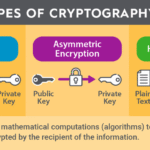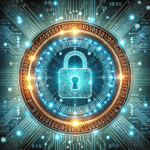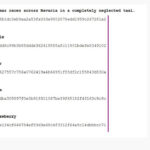In the evolving landscape of digital security, concepts such as encryption certificates and digital signatures often occupy the same conversation, yet they serve distinctly different purposes. The profound implications of these two mechanisms require thorough examination, as they function in relation to maintaining the integrity, authenticity, and confidentiality of digital communications and transactions. To delineate the differences, we can liken encryption certificates to a solid, well-locked vault, while digital signatures serve as an unambiguous stamp of approval, validating not just the contents inside but the identity of the vault’s owner.
At the core of the discussion lies encryption—a process designed to obfuscate data, rendering it unreadable to unauthorized parties. An encryption certificate, typically obtained from a certificate authority (CA), serves as a digital key that encodes information. It encapsulates critical details, such as the public key, the identity of the certificate holder, and the CA’s signature, thereby acting as a credential that vouches for the authenticity of the public key. When data is encrypted using this key, only the corresponding private key can unlock it, ensuring that sensitive information remains confidential.
In contrast, a digital signature manifests as a distinctive hallmark denoting the authenticity of a digital document. Imagine an ancient seal used to validate a royal decree; digital signatures operate similarly in the digital realm. When a user signs a document digitally, they use a private key to generate a unique hash of the document’s contents, which is then encrypted. This process produces a signature that verifies both the integrity of the document and the identity of the signer. Subsequently, when the recipient receives the signed document, they can use the corresponding public key embedded within the signatory’s digital certificate to confirm the signature’s validity.
While both encryption certificates and digital signatures utilize cryptographic techniques, their objectives differ considerably. The primary goal of an encryption certificate is to safeguard the confidentiality of data. It is employed mainly in scenarios such as secure email communications or secure website transactions (HTTPS), wherein users exchange sensitive information—credit card details or personal identifiers—over the internet. Here, the primary focus is on protecting this data from prying eyes, and failure in this respect can lead to dire repercussions, such as identity theft or data breaches.
On the other hand, digital signatures prioritize data integrity and authentication over confidentiality. Their utility shines in environments where verifying the identity of the sender holds paramount importance, such as in legal contracts, financial documents, and software distribution. The assurance that the document has not been tampered with and that it originates from a verifiable source can prevent fraud and build trust between parties. This distinction becomes critical in a world rife with digital impersonations and deceitful practices.
The distinctions do not simply stop at functionality; the operational frameworks underpinning encryption certificates and digital signatures further illuminate their unique attributes. Encryption certificates, governed by structures such as the X.509 standard, rely heavily on public key infrastructure (PKI), where the entire authenticity of a public key hinges on a trusted third party: the certificate authority. In stark contrast, digital signatures can exist independently within decentralized frameworks, employing various algorithms such as RSA or DSA. This independence can render digital signatures more versatile in certain applications, particularly in blockchain technology, where the traditional reliance on centralized authorities is minimized.
However, despite the apparent differences, both encryption certificates and digital signatures are integral to the broader ecosystem of cybersecurity. They must be employed judiciously, often in tandem, to create a robust defense against a myriad of digital threats. Encrypted data may require authentication through a digital signature to ensure that it not only remains confidential but also retains its validity once it reaches the recipient. This layered approach cultivates an environment where users can engage in online activities with a mitigated risk of compromise.
Particularly in an age where digital trust is paramount, the symbiotic relationship between encryption certificates and digital signatures cannot be overstated. They represent the dual pillars of digital security, reminiscent of a well-fortified fortress that not only guards its treasures but also proudly displays the legitimacy of its claims of ownership. The intricate dance between these two mechanisms ensures the digital landscape remains navigable and secure, allowing for the seamless exchange of information in an ever-complex world.
In conclusion, while encryption certificates and digital signatures may occasionally intermingle in discussions surrounding data security, their roles are distinct and irreplaceable. Understanding the nuances between them is crucial for individuals and organizations navigating the digital landscape. Just as a master locksmith might require different tools for crafting a secure vault versus delivering an official seal, the world of digital security invites both encryption certificates and digital signatures to work in concert, ensuring that confidentiality, integrity, and authenticity reign supreme.









Leave a Comment